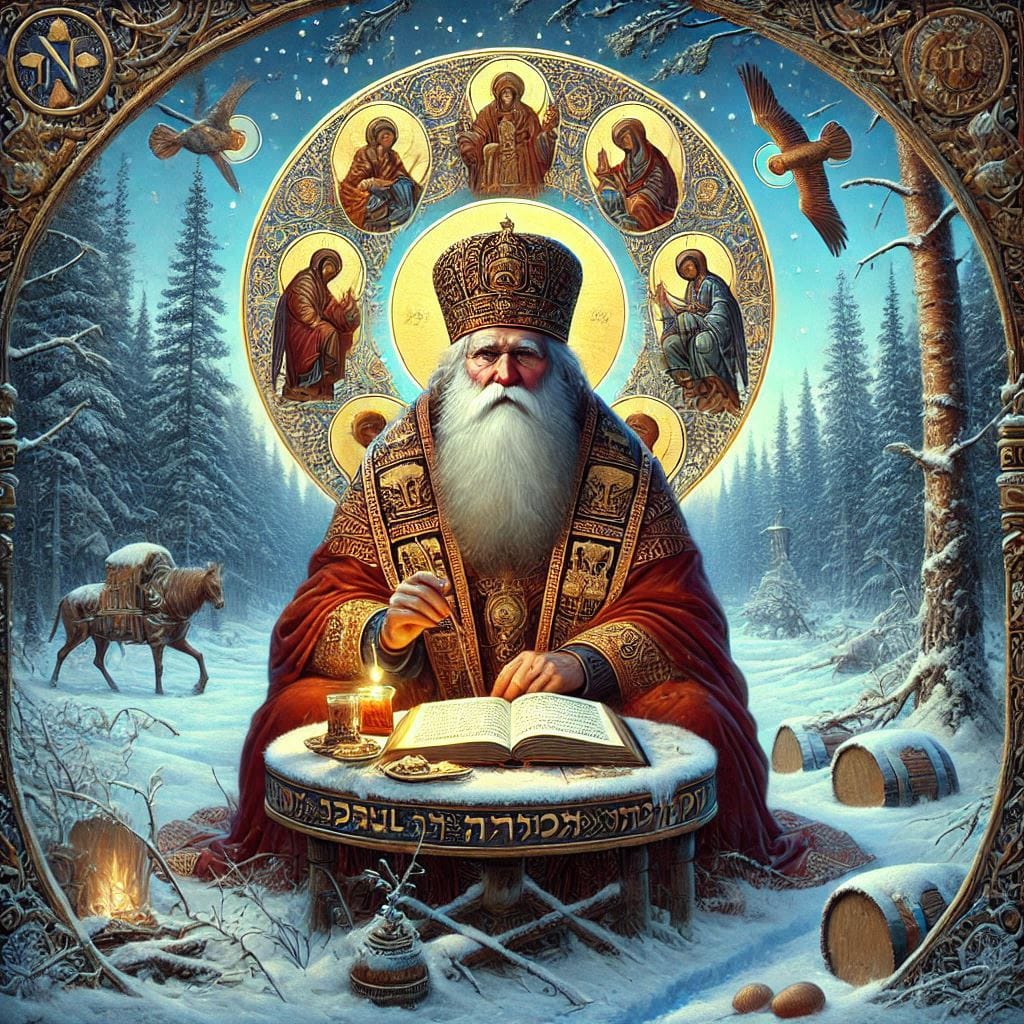
Does Paul Have Torah or Halachic Authority? Part 3 Conclusion
B"H
Do I Hate Paul (Shaul of Tarsus)?
A Jewish Response
Introduction
The question was asked of me plainly: “Do you hate Paul, Saul of Tarsus, the man whose letters became the foundation of Christianity?”
My answer is equally plain: No.
I do not hate Paul. Hatred is not the Jewish way, nor is it a useful response when dealing with historical figures.
What I do feel, however, is a deep sorrow when I read his words. Paul presents himself as a Pharisee, a Jew of Jews, a man of Torah. And yet, when we open letters such as Galatians or Ephesians, we encounter passages that appear to undermine or dismiss the eternal covenant of Torah. That is heartbreaking for any Jew to read. A fellow Jew speaking against Torah, intentionally or not, stings like a betrayal.
This is not mere theological nitpicking. For us, Torah is the lifeblood of Israel, the covenant given at Sinai, binding on Jew and Jewess alike for all generations. When someone who identifies as a Pharisee appears to erode that foundation, it cuts deep.
Yet my problem is not with Paul as a human being. My problem is with the way his writings came to be received, interpreted, and canonized, and with how they are used to create an anti-Torah theology. Let’s explore this more carefully.

The Problem with His Letters
Paul’s letters are filled with passion, mystical imagery, and spiritual exhortation. But mixed into this is rhetoric that seems to denigrate Torah:
In Galatians, Torah observance is portrayed as bondage.
In Ephesians, salvation is portrayed as apart from “works of the law.”
In other places, Torah seems relegated to a bygone dispensation rather than the eternal covenant it is.
For a Jew, this is not a small matter. This is existential. If Torah is dismissed, what remains of Israel’s unique calling? If covenant is bypassed, then Jewish identity itself is threatened.
That is why Paul’s letters are so troubling. If they were simply mystical writings about faith, renewal, and closeness to God, they would pose no great problem. In fact, some of his expressions sound remarkably like later Hasidic teachings. But his anti-Torah passages put him at odds with the very foundation of Jewish existence.

The Chronology of Events
Here is where historical sequence matters.
In Acts 21 and 23, Paul is brought before the leaders in Jerusalem. The accusation is explicit: he has been teaching Jews to forsake circumcision and the mitzvot. What does Paul do? He does not offer a clear verbal defense. Paul is silent, which speaks louder than words....So, he agrees to undergo a Nazarite-type vow in the Temple, complete with offerings, as a public act of loyalty to Torah.
This is very telling. It suggests that by this time his reputation was already tarnished. His words—or the perception of them—were causing scandal. He had to prove himself not with rhetoric but with action.
Do we think there were only Gentiles in Ephesus and Galatia?????
"Of course there were.”
“Do you think copies of those letters never reached Jerusalem?
"Of course they did.”
From this, a strong inference follows: the letters that contain the harshest anti-Torah rhetoric were written before these events. Galatians, Ephesians, perhaps Romans—these likely predate Acts 21.
By the time Paul stood before the Jerusalem leaders, those writings were already in circulation.
It is not hard to imagine the early assemblies reading them with shock. Their jaws must have dropped at the boldness of his words. Here was a man who claimed to be a Pharisee, yet whose letters made Torah sound obsolete.
So we can sketch a rough sequence:
Early letters – strong anti-Torah tone, mystical but dismissive of covenant.
Acts period – Paul is pressed, suspected, and compelled to demonstrate Torah loyalty.
Later reception – the Church canonizes his letters as sacred scripture, but minimizes the Acts episode where he shows conformity to Torah.
The result? Christianity inherited the anti-Torah rhetoric while losing sight of the corrective action.

Christianity as Noahide System
This naturally brings us to the subject of Noahidism. What role do Paul’s letters and Christianity itself play in the broader framework of Torah and the nations?
Many Jews today—especially within Hasidut, such as Chabad promote a modern “Noahide movement.” This is presented as the ideal path for Gentiles: accept the seven Noahide laws, attach yourself to Jewish teachers, and live as a righteous Gentile. On paper it sounds tidy. In practice, it has been disastrous.
We have argued this point before, and I will state it clearly here: the Noahide movement as promoted by Chabad and others is a scam. It has little halachic grounding in our time. It has produced far more atheists and bitter ex-seekers than genuine God-fearers. It is, in fact, one of the least successful outreach projects in Jewish history.
Why? Because Noahidism does not work without a functioning Temple.
The Noahide system, as described in Talmud and codified by Rambam in Hilchot Melachim, presumes an active Sanhedrin, an operative Beit HaMikdash, and a Jewish people living in full covenantal life in Eretz Yisrael. Only then can the nations be called to align with their role. Without the Temple, Noahidism collapses into abstraction.
That is why every attempt to manufacture a Noahide movement today has failed. People grow disillusioned because the system has no real grounding. It promises authority where there is none.
The truth is simple: the only Noahides we truly have today are Christians and Muslims.
Christianity, for all its distortions, is an ethical monotheistic system. It teaches the God of Abraham, however filtered.
Islam, likewise, is a strict monotheistic system rooted in Abrahamic tradition.
Both provide the nations with structure, worship, and moral order. They are, in effect, the Noahide systems of our age. Not the artificial frameworks promoted by Hasidic outreach in the last century.
This reframes how we view Paul. He was not creating Torah for Israel. He was, perhaps unwittingly, laying the foundation for a Noahide path for Gentiles. Christianity became that system—messy, flawed, but functional.

Mystical Parallels
Now, it must also be said: Paul’s mystical voice is not without beauty. When he speaks of renewal of the heart, of inner faith, of life in the spirit, one hears tones that echo through Jewish mystics centuries later.
The Alter Rebbe, Rabbi Shneur Zalman of Liadi, in Tanya speaks of divine light, inward struggle, the godly soul yearning for Hashem. Rebbe Nachman of Breslov speaks of hitbodedut, brokenhearted prayer, simple faith, and joy. The language of renewal, intimacy with God, and inward rebirth—Paul sometimes sounds startlingly close.
This is why some critics, provocatively, have even speculated that Rebbe Nachman was “a Christian in disguise.” and one of the heads of AISH HaTorah stated Chabad was the close movement is considered "Christian" I reject such speculation of Rebbe Nachman outright.
But the very fact that people even raise it shows how similar the tone can sound when mystical language is divorced from context.
And that is the point: Paul’s mysticism was divorced from Torah. Rebbe Nachman’s mysticism was rooted in Torah. Both used language of inner life, but only one kept the covenant as its anchor. That is the critical distinction.

Halachic Context: Rambam and Noahides
To ground this in halacha: Rambam in Mishneh Torah, Hilchot Melachim u’Milchamot lays out the laws of Noahides. He states that a Gentile who keeps the seven laws because they are logical is wise, but not “of the righteous of the nations.” Only one who keeps them because they were commanded at Sinai is considered truly righteous.
But Rambam also assumes a world where Sanhedrin and Temple exist. The Noahide framework is tied to the Temple service, to korbanot, to an operative covenantal Israel. Without that, it is at best a shadow.
This is why the Noahide “movement” of today, as promoted by Chabad, makes no sense. It attempts to impose a Temple-era system into exile conditions. The result is confusion, burnout, and disbelief.
By contrast, Christianity and Islam, though imperfect, function as living Noahide systems. They give nations a way to worship God, however filtered, without demanding Jewish covenant. That is why they endure while Noahide “outreach” collapses.

Paul in Historical Perspective
Putting it all together, Paul can be seen as a transitional figure.
As a Jew, he remained bound to Torah. That is why Acts shows him undergoing vows and purification. He could not escape his identity.
As a thinker, his mystical language carried sparks of beauty, but he tore them away from Torah, leaving a dangerous rupture.
As a historical force, his writings gave Gentiles a path, but that path was never meant for Israel.
From a Jewish perspective, he does not belong in the covenant of Sinai. But he does belong in the history of the nations as one who helped create a Noahide framework—albeit unintentionally

Conclusion
So, do I hate Paul? No. I do not hate him. But I do grieve over the anti-Torah elements in his letters. Those passages are what break the heart of a Jew. They stand as stumbling blocks between Jew and Gentile, Torah and covenant.
If those passages were erased, we would see only a mystical Jewish preacher whose words echo faintly in Hasidic cadences. But because they remain, we must acknowledge the damage they caused.
And as for Noahidism, the truth is clear: without a Temple, the system cannot function. The only Noahides today are the Gentiles who walk in Christianity and Islam. They are the living, though imperfect, Noahide frameworks of our age.
Paul, then, is not an enemy to be hated, but a figure to be understood. He represents a turning point where Jewish mysticism split off from Torah and seeded a Noahide path for the nations. That was not Israel’s calling, but perhaps it was his.

Subscribe now.
Sign up for our newsletter to get the most interesting stories of the day straight to your inbox before everyone else
Created with © systeme.io • Privacy policy • Terms of service


